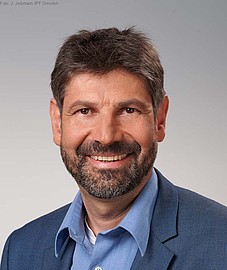Levich Institute Seminar Announcement, 04/02/2019

Tuesday, 04/02/2019
2:00 PM
Steinman Hall, Room #312
(Chemical Engineering Conference Room)
Dr. Ulrich Scheler
The Leibniz Institute of Polymer Research
Dresden, Germany
“Charge, Packing and Molecular Dynamics in Polymer Systems Studied by Magnetic Resonance “
ABSTRACT
The effective charge of polyelectrolytes depends on the condensation of counterions. Counterion condensation is influenced by the ionic strength or pH of the solvent. The combination of diffusion and electrophoresis NMR permits the direct determination of the effective charge of macromolecules or complexes in solution. With knowledge of nominal charge the fraction of condensed counterions is determined. The binding between oppositely charged molecules can be followed with this approach in particular if both give an NMR signal. From diffusion NMR the hydrodynamic size of polyelectrolytes in solution is derived via the Einstein equation. Enhanced counterion condensation resulting from higher ionic strength or other changes of the solvent leads to a more coiled conformation of the polymers. Such a coiled conformation is retained in polyelectrolyte complexes or multilayers. Solid-state NMR experiments probing proximity like double quantum or heteronuclear correlation experiments proof for such cases the presence of regions of one of the components only. These micro heterogeneities result in heterogeneous dynamic behavior. NMR provides insight to the molecular dynamics over a wide range of correlation times choosing the right type of experiment. In addition the signals are detected with spectroscopic information which permits to assign the information on the motion to individual species. Further selective information on mobility is obtained from spin-label EPR, where a low concentration of nitroxide spin labels is attached to polyelectrolytes providing selective information on the mobility of the polyelectrolytes in multilayers or complexes.
BRIEF ACADEMIC/EMPLOYMENT HISTORY:
- 1994-1996 postdoc with Prof. R.K. Harris, University of Durham, England
- Since 1996 scientist at the Leibniz-Institut für Polymerforschung Dresden e.V.
- since 2010 head of the Department Polyelectrolytes and Dispersions
- 2000-2009 head of the Department Surface Modification
- 2012; 2014 Visiting Professor Université d’Orléans
MOST RECENT RESEARCH INTERESTS:
NMR methods and their application for complex materials, polymers and polyelectrolytes. This includes solid-state NMR, rheo NMR, diffusion and electrophoresis NMR and cw EPR.

